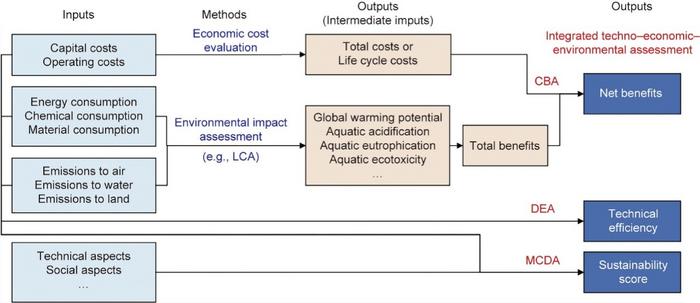A comprehensive review featured in the journal Engineering evaluates the techno-economic and environmental performance of membrane bioreactors (MBRs) used in wastewater management. Authored by Tingwei Gao, Yana Jin, and Kang Xiao, the study analyzes the economic feasibility, ecological footprint, and technical effectiveness of MBR systems. These systems are increasingly adopted globally due to their ability to produce high-purity effluent and occupy less space than traditional alternatives. However, challenges such as elevated energy demands and membrane fouling remain barriers to broader implementation.
From a financial standpoint, MBRs incur higher operational expenses compared to conventional activated sludge (CAS) methods. Operating costs for MBRs fall between 0.09 and 0.45 USD per cubic meter of treated water, whereas CAS systems range from 0.02 to 0.40 USD per cubic meter. Energy usage is also greater, with MBRs consuming 0.4 to 1.15 kWh per cubic meter, compared to 0.3 to 0.64 kWh for CAS. Despite these drawbacks, the compact nature and superior output quality of MBRs make them suitable for urban areas with strict regulatory discharge limits.
An environmental evaluation using life cycle assessment (LCA) indicates that while MBRs deliver cleaner water output, their contribution to global warming is more pronounced. The average global warming potential (GWP) for MBRs stands at 1.44 kg CO₂e per cubic meter, exceeding the 0.84 kg CO₂e per cubic meter associated with other treatment methods. This higher impact is largely driven by energy-intensive processes like aeration and membrane cleaning. To reduce emissions, the authors recommend optimizing aeration efficiency, integrating renewable power sources, and enhancing energy recovery mechanisms.
The study also investigates combined assessment frameworks such as cost–benefit analysis (CBA), data envelopment analysis (DEA), and multi-criteria decision analysis (MCDA). Findings from CBA suggest MBRs can be financially justified, showing net positive returns. DEA results indicate comparable technical efficiency between MBRs and conventional systems, though energy efficiency in MBRs lags. MCDA outcomes reveal strong technical performance but lower sustainability scores in economic and environmental dimensions.
The researchers emphasize the need for refinement in current evaluation models. They advocate for standardized LCA protocols, clearer assessment boundaries, and better handling of data uncertainties. Additionally, they stress the importance of evaluating the entire lifecycle of MBR installations—from construction through decommissioning—to fully understand their long-term sustainability. The review concludes that while MBRs offer notable advantages in water quality and spatial efficiency, addressing energy use and environmental costs is essential for improving their overall viability.
— news from EurekAlert!
— News Original —
Membrane bioreactors: a comprehensive review of techno-economic and environmental impact
A recent review published in Engineering offers an in-depth analysis of the techno-economic and environmental impact of membrane bioreactors (MBRs) used in wastewater treatment. Authored by Tingwei Gao, Yana Jin, and Kang Xiao, the study explores the sustainability of MBRs by examining their economic costs, environmental impacts, and overall techno-economic-environmental performance. n nMembrane bioreactors have gained significant attention worldwide due to their superior effluent quality and compact design. However, their high energy consumption and membrane fouling issues pose challenges to their widespread adoption. The review aims to provide a comprehensive understanding of the advantages and disadvantages of MBRs from economic, environmental, and technical perspectives. n nThe economic analysis of MBRs reveals that their operating costs and energy consumption are generally higher than those of conventional wastewater treatment processes. For instance, the operating costs of MBRs range from 0.09 to 0.45 USD per cubic meter of treated water, compared to 0.02 to 0.40 USD per cubic meter for conventional activated sludge (CAS) processes. Similarly, energy consumption for MBRs is between 0.4 and 1.15 kWh per cubic meter, while CAS processes consume 0.3 to 0.64 kWh per cubic meter. Despite these higher costs, MBRs offer potential benefits such as smaller footprints and higher effluent quality, which can be advantageous in areas with stringent discharge standards. n nThe environmental impact assessment using life cycle assessment (LCA) shows that MBRs have a positive environmental impact due to their high-quality effluent. However, their global warming potential (GWP) limits their sustainability. The average GWP of MBRs is 1.44 kg CO₂e per cubic meter, compared to 0.84 kg CO₂e per cubic meter for other processes. The high energy consumption associated with aeration and membrane scouring is a significant contributor to the higher GWP of MBRs. Strategies to optimize aeration, increase renewable energy use, and improve energy recovery can help mitigate these environmental impacts. n nThe review also examines integrated techno-economic-environmental assessment methods such as cost–benefit analysis (CBA), data envelopment analysis (DEA), and multi-criteria decision analysis (MCDA). CBA studies indicate that MBRs are economically viable, with net benefits greater than zero. DEA studies show that while MBRs and conventional processes are comparable in terms of technical efficiency, there is room for improvement in energy efficiency for MBRs. MCDA studies suggest that MBRs have superior technical performance but are less environmentally and economically sustainable compared to conventional processes. n nThe authors highlight the need for further improvements in the existing assessment methods. They suggest that future research should focus on standardizing LCA implementation, clarifying the scope of assessments, and addressing uncertainties in data and model assumptions. Additionally, the review underscores the importance of considering the full life cycle of MBRs, including construction, operation, and decommissioning, to provide a more comprehensive understanding of their sustainability. n nThe review provides valuable insights into the techno-economic and environmental performance of MBRs. While MBRs offer significant benefits in terms of effluent quality and compact design, their high energy consumption and environmental impacts need to be addressed to enhance their sustainability. The findings emphasize the need for continued research and development to optimize MBR technology and improve its cost-effectiveness and environmental performance.
